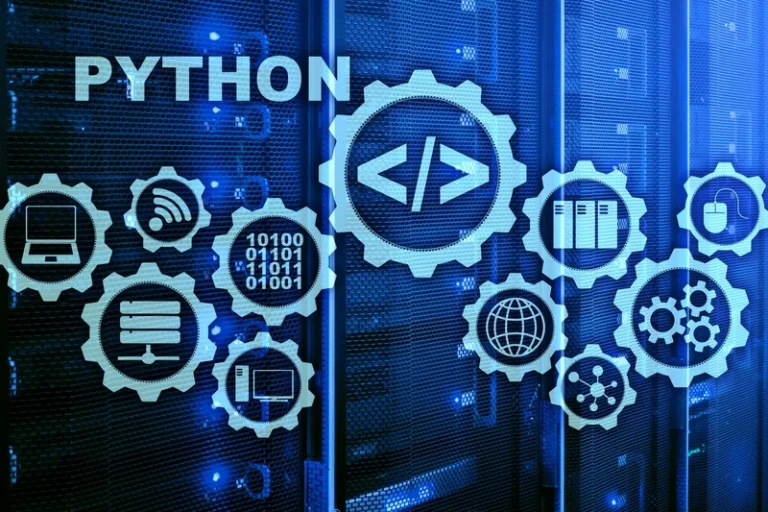Companies are under more pressure than ever to deliver high-quality products in often unrealistically short time frames. In such a market, approaching software creation in any way that does not involve a pre-defined SDLC is not a business-wise move. Start building your development around a strict Software Development Life Cycle and stay a step ahead of competitors still relying on an old-school approach to product design. The product leaves the testing phase and is ready to go into production. Some projects require the team to write user manuals or create instructional videos before the software becomes available to end users.
So, there are verification phases of SDLC on the side and the validation phase on the other side. After training, systems engineers and developers transition the system to its production environment. An output artifact does not need to be completely defined to serve as input of object-oriented design; analysis and design may occur in parallel. In practice the results of one activity can feed the other in an iterative process.
Deployment
The system is developed along with quality assurance checks and testing processes at this stage. Corporations use the SDLC to define, build, and maintain software products. It is a detailed process that creates a comprehensive outline for the engineers’ workflow. ProjectManager has the planning, tracking, collaboration and reporting tools you need to deliver a quality product to the customer every time. Unlike the iterative incremental model, an agile SDLC does not rush the team to deploy the product to customers.

However, repeated cycles could lead to scope change and underestimation of resources. It may also be helpful to choose your first software language to learn. Languages like C# and Java are still in demand by employers, but many new languages are emerging, too. Before choosing a language, you need to know what you want to code, but simple front-end development languages like JavaScript, HTML, and CSS are good places to start. In short, we want to verify if the code meets the defined requirements.
How does SDLC address security?
Expectations are clearly defined during this stage as well; the team determines not only what is desired in the software, but also what is NOT. The tangible deliverables produced from this phase include project plans, estimated costs, projected schedules, and procurement needs. The planning phase encompasses all aspects of project and product management. This typically includes resource allocation, capacity planning, project scheduling, cost estimation, and provisioning. For example, if you strive to build software designed for hourly employees, as Zoomshift has done, or time tracking software, you would start at the “requirement analysis” stage.

This is the build phase in which you seek not to answer questions but to produce outputs. Plan for what you can control and be mindful of things you can’t plan for. Much like planning for a vacation, you need to get your possessions organized and think about what bags to pack. Most importantly, the first three steps seek to generate answers to questions and the last three steps are optimized to provide outputs. You could take notes, sketch diagrams, or build graphs to more deeply understand qualitative and quantitative feedback.
Incremental development
Ongoing collaboration with your stakeholders is one of the core values of the Agile methodology, so you will want to use a tool that makes this easy, like monday.com. Only 8% of Agile projects fail, versus a whopping 21% of projects following the Waterfall model. These differences lead to many benefits for Agile methodology adopters, system development life cycle like a better ability to manage and adapt to changing priorities as your business develops. The team continuously identifies technical and functional enhancements to improve the product. The backend work integrates with the front-end work and the testers start executing their test cases to identify bugs or any potential issues.

Architecture Risk Analysis – Improve your security stance and ensure that you have secure design practices in place by identifying flaws within your systems designs. There are several pitfalls that threaten to negatively impact an SDLC implementation. Perhaps the most problematic mistake is a failure to adequately account for and accommodate customer and stakeholder needs in the process. This results in a misunderstanding of system requirements, and inevitable disappointment with the end-product. Prior to the 1950s, computing was not elaborate enough to necessitate a detailed approach like the SDLC.
Defining requirements
Once you’ve completed all testing phases, it’s time to deploy your new application for customers to use. After deployment, the launch may involve marketing your new product or service so people know about its existence. If the software is in-house, it may mean implementing the change management process to ensure user training and acceptance. It then creates the software through the stages of analysis, planning, design, development, testing, and deployment.
- It helps developers create high-quality products, manage their time and resources, and track their progress more accurately.
- Below is a high-level explanation of a few different SDLC methodologies.
- SDLC stands for Software Development Life Cycle and is also referred to as the Application Development life-cycle.
- This practice takes SDLC concepts to the next level by introducing high levels of automation and focusing on smaller software releases.
- Development and operations are merging into a DevOps capability, as the boundaries between disparate teams has been slowly dissolving in favor of a streamlined and synchronized approach to development.
- Shape Up is a two-track system where shapers and builders work in parallel.
Based on the identified patterns of risk, the team can adopt specific activities of different processes. The SDLC phases or stages can be used in various ways with multiple sequences. Organizing and reorganizing the steps of the https://www.globalcloudteam.com/ SDLC will produce so-called models or methodologies. ProjectManager is award-winning software that connects hybrid teams at any time and anywhere. We have features that manage every part of the software development cycle.
Other types of Testing
However, having information about all those frameworks will allow product managers and product teams to build better processes that generate better results. The Agile model was made in response to the rigidity of the waterfall model. Agile is an iterative process where the team is constantly re-evaluating their priorities based on regular customer feedback and the success of their sprints. Sprints are short work periods, maybe 2 weeks, where the team tries to knock out high-priority tasks and release a workable product for customer feedback. The Agile model rejects the concept that you can know everything about a project at its onset. This model focuses on gathering all of the customer requirements on the front end of the project so that every step of the SDLC can be planned.
Once planned, the steps must be executed in a linear fashion, where each phase must be completed before the next can begin. Its logical structure, and its ability to set near-accurate estimates for budgets, resources and deadlines, make it a popular methodology when the project is familiar and contains very few unknowns. Let’s take a close look at every typical phase of an average software development life cycle.
Build
In systems design, functions and operations are described in detail, including screen layouts, business rules, process diagrams, and other documentation. Modular design reduces complexity and allows the outputs to describe the system as a collection of subsystems. The waterfall model arranges all the phases sequentially so that each new phase depends on the outcome of the previous phase. Conceptually, the design flows from one phase down to the next, like that of a waterfall.
()